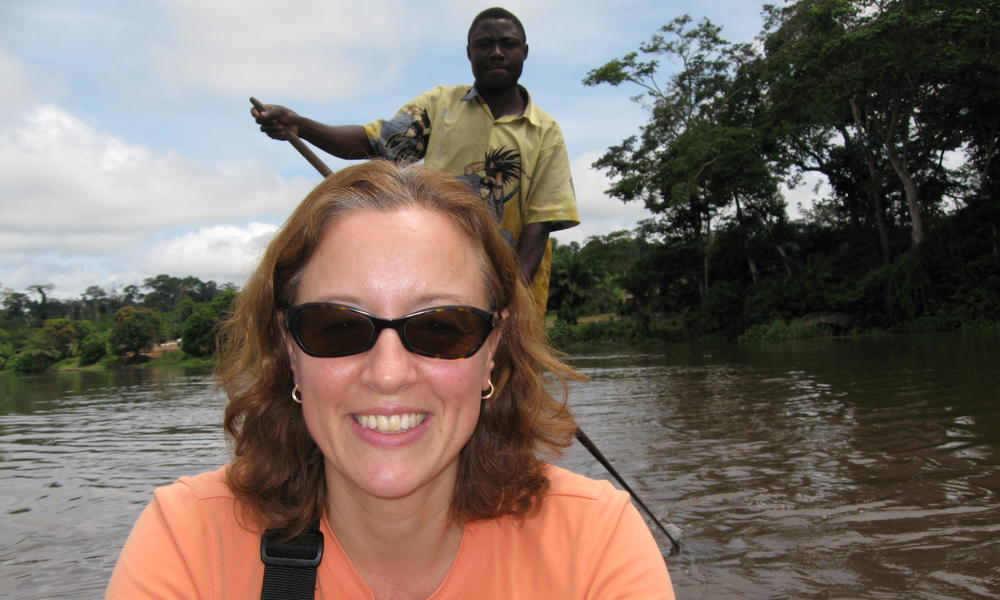“These 1.5 billion people are left behind if these issues are not taken into account.” — Jenny Springer, Director of Global Programs for the Rights and Resources Initiative.
This is the fourth installment of our “Meet A 2015-er” series that profiles the women and men who are helping to shape the Sustainable Development Goals and Climate Change negotiations as they take form later this year.
Today we get a perspective on land use and indigenous peoples’ rights from Jenny Springer, Director of Global Programs for the Rights and Resources Initiative.
What does your organization do and what’s your role in these SDG and climate negotiations?
Rights and Resources Initiative is an international coalition, focused on securing land and resource rights of indigenous people and local communities and also reducing poverty in those areas. The coalition is made up of diverse set of organizations: indigenous peoples, research, human rights groups, and environmental NGOs who all share this common agenda.
In terms of the SDGs our main goal is to inform the discussions by raising the profile of the issues that we work on, particularly community tenure and the centrality of [it] to realizing a wide range of SDGs. We also do a lot of analytical work as an organization [that we share with negotiators].
Our position is that community tenure is fundamental to both of those processes.

Why are community land rights, community tenure, an important issue? It doesn’t seem like a huge issue on the UN’s radar.
These community tenure arrangements are really vital to the livelihoods of an estimated 1.5 billion people who rely to some extent on these tenure systems.
In many parts of the world, we estimate over 6.8 billion hectares of land, people manage land and resources through these types of community tenure arrangements, particular in areas like forests and pasture lands where it makes sense to…govern access and use of the land through these community-based systems.
A billion and a half people around the world? How does this relate to achieving SDGs?
Yes, a billion!
Having secure rights to land and resources and being able to have access…supports poverty reduction in these areas, supports food security because the land can be a direct food source for these people. Where communities have legal recognition of their land rights and government support there are dramatically lower deforestation rates. In many countries, the problem is that because these lands don’t have legal recognition…people are more at risk for displacement, they don’t have the same kind of incentives for long term investment, it’s also not legal for them to benefit from the resources of the land, and that generates conflict.
[Legally recognized community tenure] also helps to support women’s livelihoods, well-being of families, social status…even issues of domestic violence are influenced when women have secure property rights.
Is it being talked about enough in the SDG negotiations?
I would say, not yet. In the context of the SDGs there are a number of references to ownership and control of land so that’s very important but is has been recognized in relation to poverty reduction and food security, for example. At the same time, we have not yet seen explicit language related to community tenure, to these kinds of community-level land rights of indigenous people and local communities.
That’s extremely worrying because these communities are also amongst the poorest people globally. Statistics show that indigenous people make up under 5% of the global population, but 15% of the world’s poorest people.
What about the climate negotiations? It seems the tie-in to deforestation would make it a more obvious topic there.
You know, interestingly it has been more prominent in the climate process. At the same time, I think there are still a lot of uncertainties leading up to the final agreement.
A lot of the more specific negotiations of REDD+ were concluded in Warsaw, but I think now there are broader discussions about land use and indigenous and local community land rights need to brought into those broader discussions. The concern now is that the recognition of [community tenure in the specific REDD+ discussions] not get lost as the negotiations move toward a broader approach to land use.
Many of the 2015-ers I’ve talked to have said there are just too many goals and that they are too high level to really be effective. What are your thoughts?
I think that’s the challenge of the process: on the one hand wanting to be very inclusive and other hand having something that’s very targeted that enables people to have a concrete agenda to work towards.
We see indicators [the targets under the goals] as a place where these broader goals become more concrete. if you have to measure something, you tend to do it!
Measurement of indicators seems logical, but it doesn’t look like itwon’t be discussed in detail until maybe the July/August rounds.
My understanding is that these indicators aren’t actually meant to finalized until after September, it’s going to be a longer process. There will some sort of higher level guidance or…framework before September.
What do you want to see for community tenure/community land rights in the September Declaration and beyond?
What we really want to see is this explicit language recognizing community land rights of indigenous and local communities and a recognition that these rights are an essential foundation for realizing many of these goals. We also want to make sure the targets and indicators are not falling below the standards of existing international agreements by going through a technical proofing, as it’s being called.
It’s that explicit inclusion of community tenure [that could be a problem]. A lot of people who think of land rights tend to think about individual [rights], which is certainly important in many contexts, but it doesn’t fully address the situation.
These 1.5 billion people are left behind if these issues are not taken into account.
